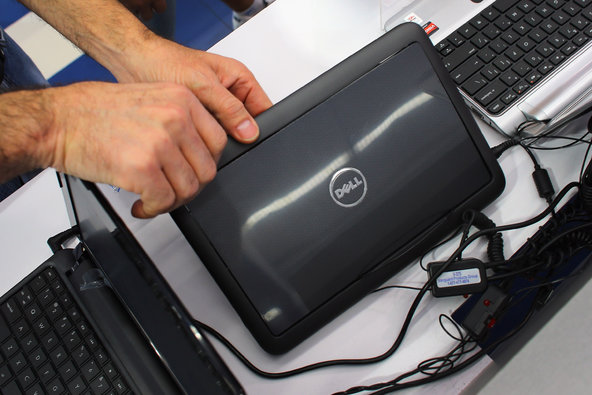Samsung, which is based in Suwon, South Korea, said net income rose to 7.77 trillion won, or $6.9 billion, from 5.19 trillion won a year earlier. Sales rose to 57.46 trillion won, from 47.6 trillion won.
But the report showed a decline in earnings from the first quarter in Samsung’s mobile phone business despite the introduction of a new flagship model, the Galaxy S4.
Though the S4 has been selling at a brisk pace, it has fallen short of some analysts’ expectations. Promotional events like an introductory gala for the S4 at Radio City Music Hall have driven up marketing costs, while rivals continue to roll out competing models.
“The strong growth streak for the smartphone market is expected to continue in the third quarter, albeit at a slower pace,” Samsung said in a statement.
Market reaction to the report from Samsung was muted because the company issued an earnings forecast earlier this month; the results reported Friday were broadly in line with that outlook, though below previous expectations.
The results from Samsung follow the earnings report from the company’s chief rival, Apple, which showed similar trends in the smartphone business.
Apple reported earnings that beat Wall Street expectations, but its profit declined from a year earlier and its revenue was flat. While Apple’s posted strong iPhone sales in the United States, the company showed weakness in China and in sales of iPads.
In recent months, the shares of Apple and Samsung have been hammered by investors, who worry that even as the companies report continued growth in sales of smartphones, they will struggle to maintain their momentum.
“In a way, Apple and Samsung have become victims of their own success,” Pete Cunningham of the research firm Canalys said before the Samsung results were released. “When these companies report many billions of profits every quarter, it’s hard to say they are doing anything wrong.”
Many say the high end of the smartphone market, which Samsung and Apple dominate, is looking saturated. Most wealthy consumers in developed markets already own such devices, so growth is increasingly occurring in lower-price brackets in developing markets, where Apple does not compete.
Samsung, with a broader product range, may be better positioned, analysts say, though it faces stiff competition at the low end of the market from Chinese makers.
For expensive phones, the companies face renewed competition from Sony, HTC and Nokia, though analysts say innovations in smartphone design and technology are becoming more incremental.
“If you combine all these players and look at what they are doing, it’s hard for Samsung or Apple to keep growing market share,” said Bryan Wang, an analyst at Forrester Research. “But the expectations for both companies are still high.”
IDC, a research firm, said Samsung’s share of the smartphone market slipped to 30.4 percent in the second quarter, from 32.2 percent a year earlier.
Samsung’s smartphone sales rose by 43.9 percent, outpacing Apple, which showed a 20 percent gain. But smaller smartphone makers that focus on lower-cost devices did even better, with Lenovo and LG, for example, more than doubling their sales.
“The smartphone market is still a rising tide that’s lifting many ships,” said Kevin Restivo, senior research analyst at IDC, in a statement. “Though Samsung and Apple are the dominant players, the market is as fragmented as ever. There is ample opportunity for smartphone vendors with differentiated offerings.”
While Samsung does not break out the number of devices it sells on a quarterly basis, another research firm, Strategy Analytics, estimated that the company shipped 76 million smartphones in the second quarter, 56 percent more than a year earlier and more than double Apple’s total of 31.2 million.
With growth picking up in the low end, Strategy Analytics said, the smartphone market over all is expanding faster than it was a year ago. That helps Samsung in another way, because the company also is the world’s biggest producer of semiconductors, an important component in smartphones and other electronic devices.
Samsung said operating profit in its semiconductor division rose to 1.76 trillion won from 1.03 trillion won a year earlier, as it experienced strong demand from its own mobile business, as well as from other phone makers to which it supplies chips.
But Samsung said its television business was hurt by sluggish demand in Europe, where an economic recovery has struggled to take hold.

Article source: http://www.nytimes.com/2013/07/26/technology/samsungs-profit-rises-but-so-does-the-competition.html?partner=rss&emc=rss



